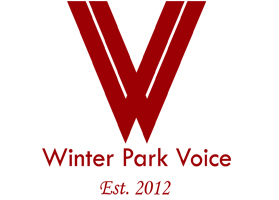Winter Park’s special blend of urbanism, civic institutions, and nature is the product of the American Renaissance, a generational effort to mold an unprecedented prosperity into a new urban civilization. The movement, which took root in the 1880s and died out with the Great Depression, represents the last full flourish of the Renaissance that began in 15th-Century Italy.
To Envision the Future, We Must Understand the Past Visioning the future demands building on the past. In 1994 a three-day conference, Winter Park in Perspective, identified the definitive aspects of the community’s pleasing scale and sense of place. This process set the foundation for the reconfiguration of Park Avenue, a project where history trumped controversy.
It is easy to assume Park Avenue’s shade trees, outdoor cafes, and well-articulated pedestrian environment are relics of the 1920s, but they actually date from that 1994 effort, which set an important precedent. Transit Oriented Development Circa 1882
Victor Dover, the nationally-renowned consultant for the Park Avenue project, features Winter Park in his recent book, Street Design: The Secret to Great Cities and Town. He notes how the success of Park Avenue galvanized local leaders “to contemplate a grand plan for the long-term revival of Central Park, under the direction of landscape architect Forest Michael.” History also informed the 50-year vision set forth in the Central Park Master Plan (CPMP).
West Meadow Inspired by Frederick Law Olmsted Replacing the parking lot north of Morse Boulevard with the West Meadow drew inspiration from Frederick Law Olmsted. His iconic Long Meadow in Brooklyn’s Prospect Park illustrated how an idyllic green bounded by native trees could enhance Central park.
At the same time, Rollins College built the McKean Gateway to link the college and the community. The arched entrance was inspired by the college’s historic plan. In 1931, Hamilton Holt commissioned the drafting of an “ideal campus plan.” Rollins would be an academic village centered on a library that would celebrate a place and architecture derived from the Italian Renaissance.
Principles of Art, Not Traffic Counts, Inform Vision
History Is Not Found in Surveys
History Will Light Winter Park’s Path to the Future Today, Olmsted’s famous model, Riverside, IL, is a National Historic Landmark. Winter Park deserves equal status. Editors Note:
History Will Light Winter Park’s Path to the Future
|
| You Depend on the Voice for In-Depth News. We Depend on Readers Like You to Support Our Full Time Reporting. |
| Please Contribute / Your Support Funds WPV Video & News Research
Winter Park Voice news & video coverage promotes transparency at City Hall. Winter Park Voice readers are able to literally see policy being made and access documents & background reporting that enhance their understanding of the forces that shape our community. Your Contribution is Applied Where It Matters Most |






Recent Comments